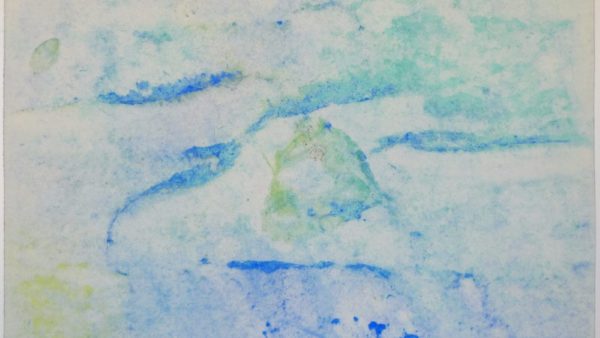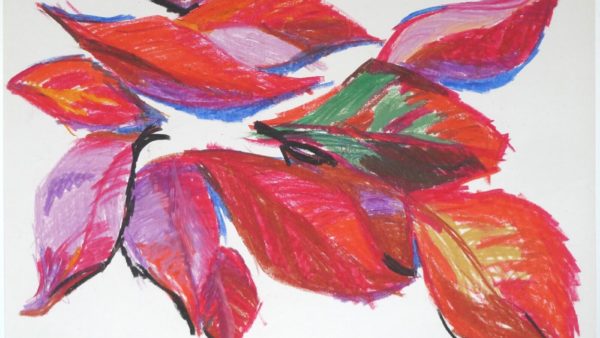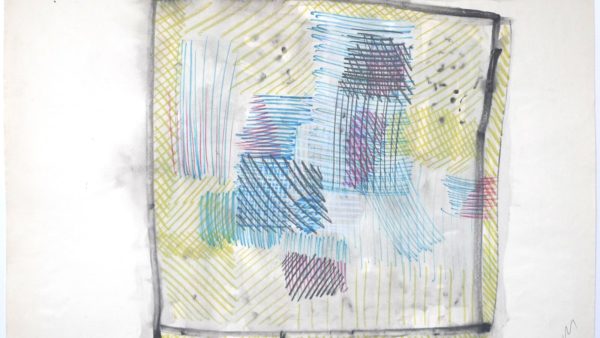Born in Venice in 1924, Vinicio Vianello represented one of the most significant personalities of the post-WWII Venetian scene and one of the most interesting artists in the Italian painting arena of the fifties and sixties. A multifaceted artist who dealt with painting, ceramics, glass, design, lighting, architecture and even with the research for solar and alternative energies. Vianello’s work is characterized by an elementary painting with a plastic consistency full of enigmatic and disturbing figures.

He was one of the exponents of Spatialism alongside Lucio Fontana, sharing with his master the spirit of cutting-edge research and the interest in every possible material useful to give new forms and results to art. He attended the Academy of Fine Arts under the guidance of Giuseppe Cesetti. He approached glass as a means of artistic expression, he visited various Murano furnaces, where he learned the techniques of the trade becoming an ingenious experimenter and inventor of shapes in the world of glass and design.
He was one of the exponents of Spatialism alongside Lucio Fontana, sharing with his master the spirit of cutting-edge research and the interest in every possible material useful to give new forms and results to art. He attended the Academy of Fine Arts under the guidance of Giuseppe Cesetti. He approached glass as a means of artistic expression, he visited various Murano furnaces, where he learned the techniques of the trade becoming an ingenious experimenter and inventor of shapes in the world of glass and design.
In 1950 he participated in the Art Biennale, where he presented his first works created by the master Alfredo Barbini, characterized by the asymmetry of the pieces, breaking up the ancient parameters of this working tradition. Influenced by the discoveries in the field of nuclear physics, he participated in the 1952 Venice Biennale with the series Nuclear explosions, large abstract vases created by the master Ferdinando Tosi.
In 1956, he was commissioned by the Veneto Institute for Work to set up the exhibition dedicated to Murano glass in Gothenburg, at the RöhsskaKonstslöjdmuseet, achieving a great success for the particular arrangement of the pieces according to sizes and colors in relation to the large window in the background. The following year, Vianello received the Compasso d’Oro award given to the Milan Triennale for his vasi variante made by Lino Tagliapietra.
His glass sculptures – Nuclear Reaction, Explosion in Las Vegas – or his asymmetrical vases, as well as the lamps or the immense glass creations of the sixties and seventies, are considered pillars in design and technical experimentation. In Venice he founded the experimental design course for industrial designers and craftsmen with Giulio Carlo Argan, Carlo Scarpa and Franco Albini, at the Veneto Institute for Work. The course was oriented towards a specific preparation in the design of objects intended for industrial production.
Vero e proprio manifesto di una nuova pittura è la cartella di grafiche editata nel 1952 dalla Galleria del Cavallino. Si tratta di un gruppo di litografie – 5 idee spaziali – che assunsero anche la funzione di programma teorico, accompagnata da uno scritto dell’autore che annunciava quel momento come una svolta epocale. Si prospettava lo sviluppo di una nuova concezione estetica tra razionalità progettuale, sapienza A true manifesto of a new painting is the graphics folder edited in 1952 by Galleria del Cavallino. It is a group of lithographs – 5 spatial ideas – which also assumed the function of a theoretical program, accompanied by the author’s words announcing that moment as an epochal turning point. The development of a new aesthetic concept between design rationality, constructive wisdom and imaginative freedom was envisaged. This pushed the painter to use more and more materials and techniques taken from the designer, to create glass shapes and objects, and to conceive modular plastic structures for private residences and urban centers, experimenting with innovative lighting systems for the benefit of greater ecological respect.


